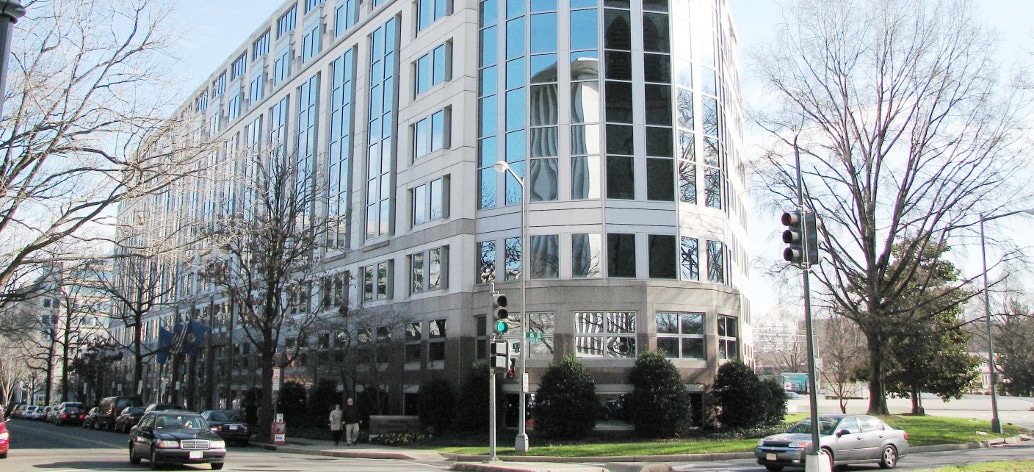Could the Section 201 trade case actually create jobs? One study, furnished by petitioners Suniva and SolarWorld USA, says yes.
The study, titled Impact of the Section 201 Remedy On Employment in the U.S. Solar Industry and prepared by law firm Mayer Brown, was released exactly one week before the U.S. International Trade Commission (USITC) is set to take testimony in the Section 201 complaint filed by bankrupt module manufacturer Suniva and SolarWorld USA, the subsidiary of bankrupt German module manufacturer SolarWorld AG.
The USITC’s investigation will “determine whether crystalline silicon photovoltaic (“CSPV”) cells (whether or not partially or fully assembled into other products) are being imported into the United States in such increased quantities as to be a substantial cause of serious injury, or the threat thereof, to the domestic industry producing an article like or directly competitive with the imported articles.”
As the whole industry prepares to turn its eyes to Washington D.C. next week as hearings on the complaint get under way, the new study suggests a decision in the petitioners favor would create – not destroy – solar jobs in the United States. Relying on analysis based on a publicly available model developed by the U.S. Department of Commerce and GTM Research, the study argues a favorable decision would create a net increase of more than 114,800 new jobs and could create 45,000 new U.S. manufacturing jobs.
The industry currently employs 260,000 people, according to The Solar Foundation’s National Solar Jobs Survey.
“This is about bringing investment back to the U.S. solar manufacturing sector,” said Matt Card, Suniva’s executive vice president of commercial operations. “A healthy industry should create jobs in the entire value chain, including manufacturing. This conservative analysis, using well-established U.S. Department of Commerce formulas, shows that this safeguard action can create huge impact in the manufacturing sector, even as we continue to see tremendous growth in solar installations.”
“We need to ensure that the next generation of solar technology is developed here in the United States,” said Juergen Stein, CEO of SolarWorld Americas Inc. “In order to have a strong solar industry, America needs to have a strong solar manufacturing industry. With growth in manufacturing will come investment, R&D, and many thousands of additional solar industry jobs here in America.”
Tony Clifford, chief development officer (CDO) of Maryland-based solar company Standard Solar, said he couldn’t believe the audacity of the petitioners in bringing forth this study.
“Three months ago [one of Suniva’s investors] offered to end Suniva’s existence for $55 million,” said Clifford, who also sits on the Solar Energy Industries Association’s (SEIA) executive committee and chairs its distributed generation subcommittee. “Now it issues a press release saying that the Section 201 trade case is going to create 144,000 new jobs in the solar industry. This is fantasy land – what will they promise next?”
“I’m hopeful that the USITC will see this fanciful economic analysis for what it really is,” Clifford added. “It is a ploy financed by a few greedy bankers using foreign money of unknown origin in an attempt to get the U. S. government to rescue the bankers from their poor investment decisions.”
Jenny Chase, head of solar analysis at Bloomberg New Energy Finance, took to Twitter to express her befuddlement at the study.


It should be noted that independent analyses by research firms like IHS Markit and Greentech Media have found that the market could be slashed between 50% and 60%.
Paul Nathanson, spokesman for the Energy Trade Action Coalition (ETAC), said he wondered what qualified Mayer Brown – the law firm representing Suniva in the trade action – to do economic analysis.
“The Suniva/SolarWorld ‘study’ is actually a five-page memo (including graphs and footnotes and several typos) prepared by Suniva’s law firm, who filed the company’s trade petition,” Nathanson said. “It contains no economic analysis and posits a theory that turns supply-and-demand basics on its head by claiming that raising the price of a product somehow creates more demand for that product.”
“This solar case is not about protecting solar jobs in the U.S.,” Nathanson said. “It is an attempt by two companies that made poor business decisions to recover lost funds for their own financial gain – all at the expense of the rest of the solar industry.”
Abigail Ross Hopper, president and CEO of SEIA, echoed Nathanson’s skepticism and said the association’s members understand that a decision in favor of the petitioners would devastate the industry.
“The notion that doubling the price of solar panels would somehow increase demand and create jobs is preposterous,” Ross Hopper said. “SEIA has spoken with dozens of manufacturers in the supply chain who ardently oppose this petition because the projected decline in demand will force them to lay off workers.”
“SEIA’s members know what impact this will have on their ability to produce jobs,” Ross Hopper continued. “Companies working in the solar industry today have been clear that Suniva’s sought-after remedy will be devastating to the American solar industry.”
This content is protected by copyright and may not be reused. If you want to cooperate with us and would like to reuse some of our content, please contact: editors@pv-magazine.com.








By submitting this form you agree to pv magazine using your data for the purposes of publishing your comment.
Your personal data will only be disclosed or otherwise transmitted to third parties for the purposes of spam filtering or if this is necessary for technical maintenance of the website. Any other transfer to third parties will not take place unless this is justified on the basis of applicable data protection regulations or if pv magazine is legally obliged to do so.
You may revoke this consent at any time with effect for the future, in which case your personal data will be deleted immediately. Otherwise, your data will be deleted if pv magazine has processed your request or the purpose of data storage is fulfilled.
Further information on data privacy can be found in our Data Protection Policy.